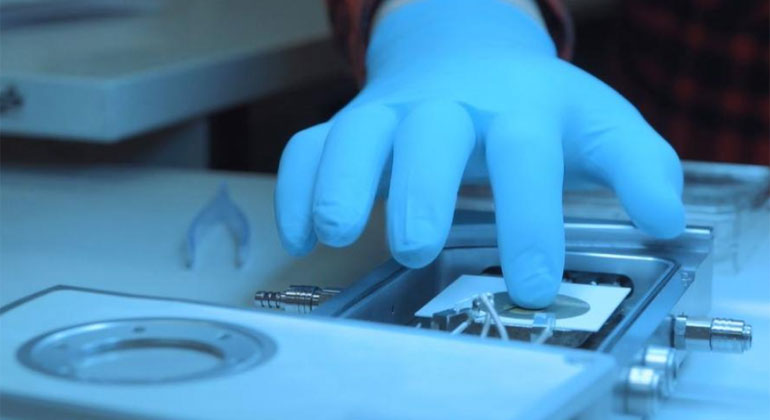Material that harvests energy from three sources is proven in practice
Did you know that in the future you can charge your phone by walking? Dr. Yang Bai from the Microelectronics Research Unit at the University of Oulu is working on a material, that could gather energy from the heat, light and movement around us and transfer that into electricity.
A novel material that could replace small power sources, like batteries in various electronic equipment such as sensors, has been developed in the Microelectronics Research Unit in the University of Oulu, Finland. The material, which harvests energy from its environment, can possibly also be used for printed electronics in the form of different kinds of surfaces.
The new material KNBNNO can harvest energy from the light, heat and motion of its environment, and all at the same time. The ability of a single material to harvest energy from three sources simultaneously is entirely new in the field of applications of material research and energy harvesting. The material, which is based on a perovskite structure, was developed by researcher Yang Bai by carefully adjusting its composition.
The first scientific article about the KNBNNO material by Yang Bai and the research group was published in Applied Physical Letters in February, attracting substantial international publicity.
In their new study, which was published in the distinguished Advanced Materials journal on 6 June 2017, the researchers reported that the ability of KNBNNO to harvest energy from three sources can be demonstrated in practice. When table lamp light is directed on the sample, or when it is heated with a hairdryer or tapped mechanically, the sample produces energy that can be measured. The Advanced Materials article features the results from the practical experiments.
Dr. Yang Bai works as a Marie-Sklodowska-Curie fellow in the University of Oulu Microelectronics Research Unit directed by Professor Heli Jantunen.
Website of the Microelectronics Research Unit, University of Oulu








